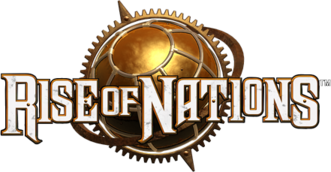| Unit Information | Game Strategies | History |
Contrary to popular belief, the Romans' most famous military unit — the legion — was not a wholesale innovation, but was instead the results of the percolation of various experiences in war — especially the ones where the Romans did not fare so well. Actual evidence and accounts so far suggest that the first Romans fought as their Etruscan overlords did — who in turn copied the Greek style of fighting in phalanx formation, using equipment more or less similar to that used by the Greeks. Armies, however, were also recruited on a somewhat feudal basis — the cost of arms and armour was borne by the individual soldier, in contrast to what was probably practised in imperial China and the Assyrian empire, and over time, the Roman empire.
The increasing intensity of conflict and the weaknesses of the phalanx soon began to take its toll, and by the 1st century BC the Romans were obliged to look for a new means of organising their fighting men, which the legion proved to be. The legionaires that was part of this army were career soldiers serving for a period of twenty years, and trained constantly in the art of warfare. While the leading legates of the legion were still aristocrats, there no longer was any distinction between members with regards to the quality of their armaments. A legion roughly consisted of 6,000 men, each equipped with a shortsword called the gladius, a dagger, two pilums (a special form of a javelin that could be used to hurl at the enemy or ward off cavalry). For defence, the legionaries wore a metal helmet and carried a large retangular shield that was slighly curved to surround the soldiers body. Behind this he wore either a kind of banded plate armour called the lorica segmentata, a chainmail jacket, or a jacket made of metal scales.
This process of military organisation was also aided by the Marian Reforms, named after the general Gaius Marius (157-86 BCE), which advocated the need for a professional army independent of property ownership and for the settling of soldiers on conquered lands as part of their pay. The Marian Reforms were a highly rousing success, because it meant that Rome could always have a professional military corps on hand to deal with any military contingencies, instead of having to wait out a lengthy period of mobilisation. However, the granting of land as retirement benefits to soldiers soon resulted in a shift of loyalty in soldiers away from the Roman state and to individual generals instead, resulting in the mutation of the democratic republic into a crypto-feudalistic military state. This would soon lead to the rise of the Roman Imperium or Empire, as civil wars reduced the power of the Roman senate, and led to the rise of a new type of ruler — the Imperator or emperor.
